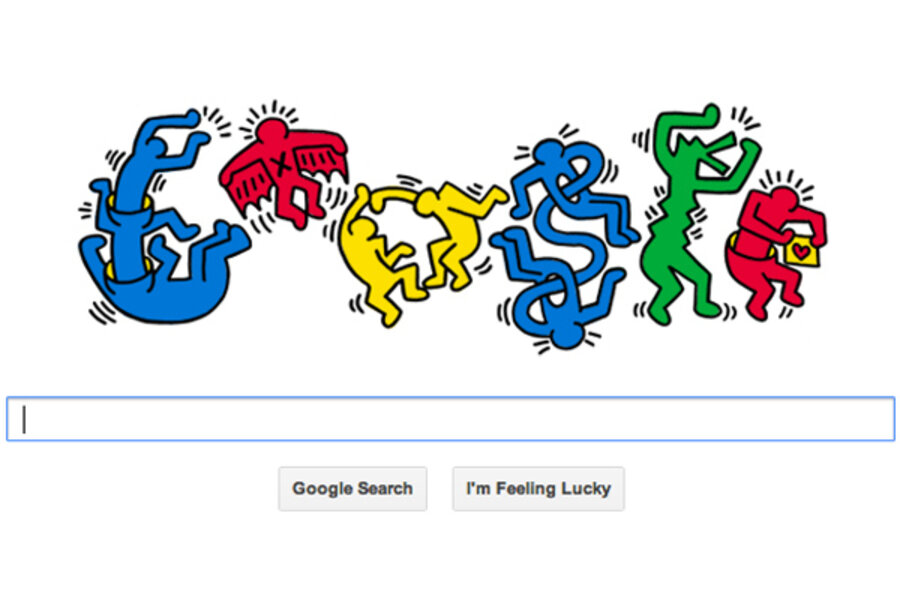How Keith Haring accidentally invented the museum gift shop
Loading...
Even if you're unfamiliar with the name Keith Haring, you probably recognize his signature style. Friday's Google doodle captures several of his classic designs – romping, colorful characters caught mid gyration.
The art appears on posters, shirts, pins, books, and countless knickknacks. Haring's look took off in the 1980s, thanks in part to his personal store, the Pop Shop in New York. The SoHo boutique opened in 1986 to sell Haring reproductions.
The art world didn't take this well.
He's muddying art with commercialism, they cried. "That may be why someone spray-painted its threshold with words like 'Capitalist' and others too rude to mention," reported the New York Times a few days after the Pop Shop opened.
Haring saw things very differently. He started out as an underground artist, literally. His first famous projects involved drawing stylized graffiti in subway stations. At the time, New York City covered empty ad space with black paper. Haring traveled from station to station, drawing over the paper with chalk and chatting with commuters about his work. These doodles helped him develop his classic think-lined style. He grew so prolific – completing up to 40 drawings a day – that fame followed close behind.
Soon, galleries and collectors wanted to buy up his full-sized work. His paintings skyrocketed in price. This didn't seem right to Haring. He believed that art, or at least his art, was for everyone. So, Haring opened a store.
"Here's the philosophy behind the Pop Shop," he once said, "I wanted to continue the same sort of communication as with the subway drawings. I wanted to attract the same wide range of people and I wanted it to be a place where, yes, not only collectors could come, but also kids from the Bronx.... This was still an art statement."
Once he found some retail space in downtown Manhattan, he covered the walls in a dizzying black-and-white tessellation. Pop Shop stocked Haring-themed T-shirts, toys, buttons, and even more curious fare, such as inflatable babies, baseball caps, and Swatch watches.
The store did indeed attract kids from the Bronx, but also higher-profile customers, like Madonna.
"I watched Keith come up from that street base, which is where I came up from," she once told a Haring biographer. "He managed to take something from what I call 'Street Art,' which was an underground counterculture, and raise it to a Pop culture for mass consumption."
Pop Shop changed the way people thought about art and commerce. When the store closed in 2005, Julia Gruen, executive director of the Keith Haring Foundation, told The Villager that the shop was a first in many ways. Today's much beloved museum stores didn't exist, at least not in the way we imagine them now. Back then, they didn't offer the massive selection of reproductions, books, art-inspired jewelry, and home goods.
“You were happy if you could get a postcard or a bookmark at a museum shop,” said Gruen.
That changed – not necessarily because of Haring, but it changed along with Haring. He, Andy Warhol, and others transformed high-art into something that belonged on shelves and in homes, not just on gallery walls.
"He was instrumental in terms of challenging the traditional art/commerce dynamic," said contemporary art dealer Simon Oldfield in a 2009 article by the Guardian. "Together with his contemporaries such as Jean-Michel Basquiat, he ushered in a new era and commented on contemporary culture in a way nobody else got close to. Pop Shop was an act of genius. It took Warhol's Factory to the street."
For more on how technology intersect daily life, follow Chris on Twitter @venturenaut.







